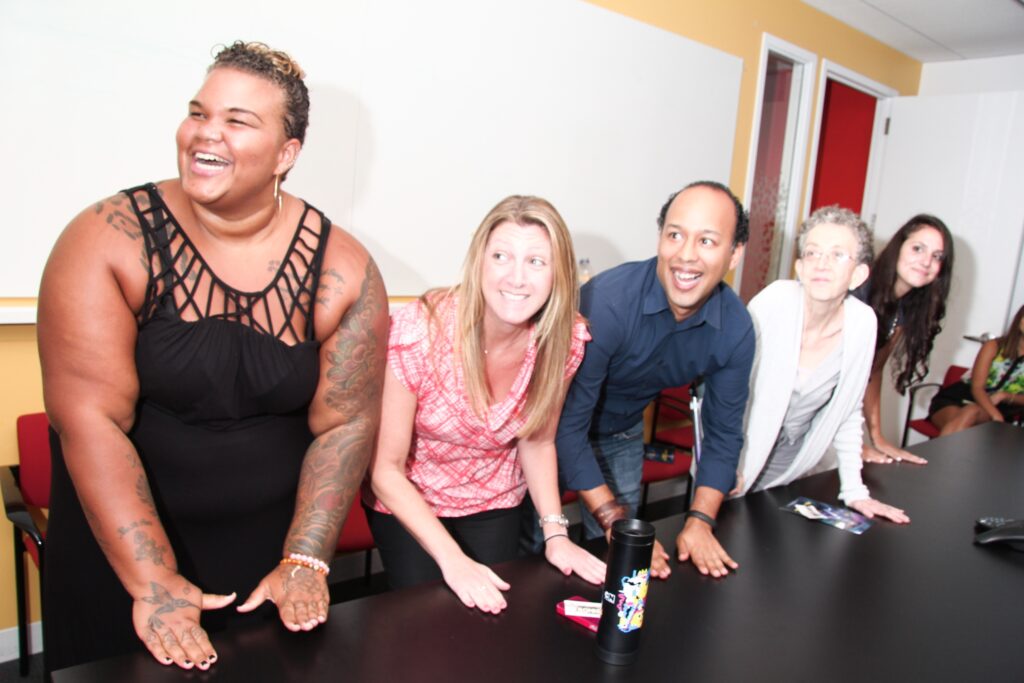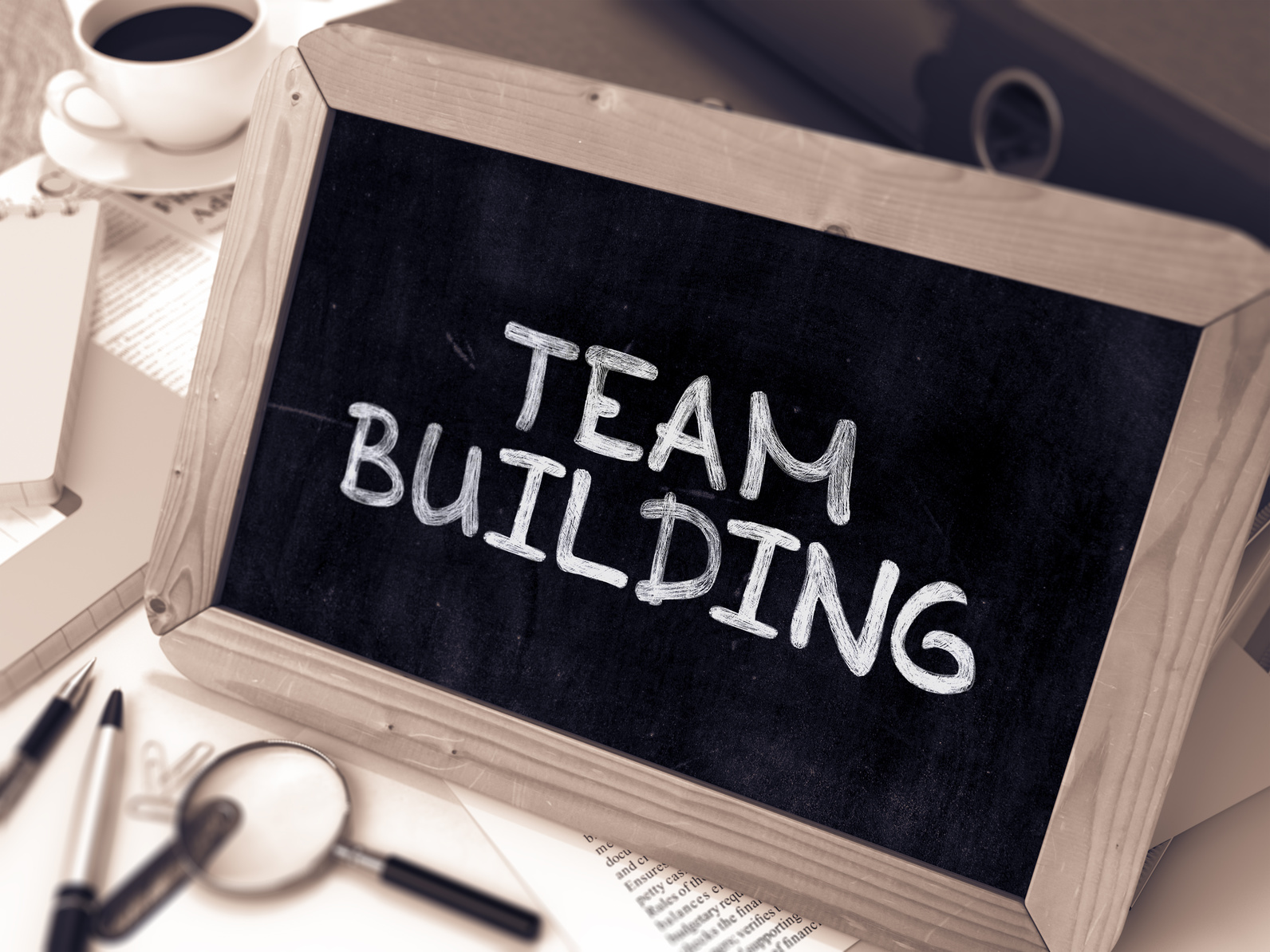In today’s fast-paced work environment, keeping team meetings engaging and productive is more crucial than ever. As organizations strive to maintain high levels of motivation and collaboration, traditional meeting formats often fall short of meeting these needs.
Enter gamification—an innovative approach that leverages game-like elements to transform routine meetings into interactive and dynamic experiences. Gamification isn’t about turning meetings into games but rather about integrating game mechanics to make everyday tasks more engaging and rewarding.
This article explores the concept of gamification in team meetings and showcases how IT’S PLAYTYME Game Shows, located in Teaneck, NJ, can revolutionize your meetings, making them both enjoyable and very effective.
What is Gamification?
Defining Gamification
Gamification refers to the application of game-design elements and principles in non-game contexts. The goal is to enhance user engagement, motivation, and participation by introducing game mechanics such as points, badges, leaderboards, and challenges. In the context of team meetings, gamification doesn’t mean transforming every aspect into a game but rather integrating specific game-like features to make meetings more interactive and engaging.
At its core, gamification involves using elements such as scoring systems, rewards, and competition to create a more compelling and motivating environment. For instance, instead of simply discussing project progress, you might introduce a point system where team members earn points for contributions and ideas. This approach not only makes the meeting more interesting but also encourages active participation and a greater sense of achievement.
The Importance of Gamification in Team Meetings
Incorporating gamification into team meetings offers several key benefits that can significantly enhance both the effectiveness and enjoyment of these sessions. Here’s why gamification is important:
- Increased Participation: Gamification introduces elements of competition and rewards, which can encourage more active involvement from all team members. When participants are motivated by points or badges, they are more likely to engage in discussions and contribute ideas.
- Improved Communication: Game mechanics such as challenges and team-based activities can foster better communication among team members. By working together to achieve common goals, team members practice and enhance their collaborative skills, leading to improved overall communication.
- Enhanced Morale: Gamification adds an element of fun to meetings, which can boost team morale. When meetings are engaging and enjoyable, team members are more likely to have a positive outlook and feel motivated, which contributes to a more cohesive and enthusiastic team environment.
- Higher Motivation: The inclusion of rewards and recognition systems can increase motivation. When team members know that their contributions are acknowledged and rewarded, they are more likely to put forth their best efforts and stay engaged throughout the meeting.
- Better Retention: Gamified elements can improve information retention. Interactive and engaging meetings make it easier for participants to remember key points and discussions, leading to more effective follow-up and implementation of meeting outcomes.
By integrating gamification into your team meetings, you can transform them from routine sessions into lively, productive, and highly engaging experiences. IT’S PLAYTYME Game Shows offers an excellent way to implement these gamification strategies, providing a range of interactive game formats designed to make your meetings both fun and effective.
Got Games? – Press Play! #boostmorale #teambuilding #playatwork
![]()
Book a live game show experience today!
Contact us for further details.
For Immediate assistance by text – 917-670-4689
No deposit required. 5 Star Google Reviews.
We plan and facilitate all activities.
Types and Categories of Gamification in Team Meetings
A – Points and Scoring Systems
Points and scoring systems are at the heart of many gamification strategies. These systems quantify participants’ performance and progress during meetings, creating a structured way to track achievements. By assigning points for various activities, such as completing tasks or contributing ideas, you can introduce a competitive element that motivates team members to engage more actively.
In practice, points can be awarded for a range of actions, from answering questions correctly to participating in discussions. This approach helps make contributions more visible and encourages a friendly competition among team members. The accumulation of points can lead to higher levels of engagement and a greater sense of accomplishment when team members see their progress in real-time.
B – Badges and Achievements
Badges and achievements are visual symbols of accomplishment that recognize individual or team milestones. They serve as motivational tools by celebrating successes and encouraging ongoing effort. Badges can be awarded for various achievements, such as completing a project ahead of schedule, demonstrating exceptional teamwork, or coming up with innovative solutions.
These visual rewards not only acknowledge the hard work of participants but also foster a sense of pride and ownership. When team members earn badges, they have a tangible reminder of their contributions, which can boost morale and motivate them to strive for further achievements. Badges and achievements help create a culture of recognition and appreciation within the team.
C – Leaderboards
Leaderboards are a popular gamification tool that displays participants’ rankings based on their performance. By showing who is leading in various metrics, leaderboards create a competitive environment that drives individuals to perform at their best. They can be updated in real-time, providing immediate feedback on how team members are doing relative to their peers.
Leaderboards can be used to track different aspects of performance, such as the number of tasks completed, points earned, or goals achieved. The visibility of rankings can encourage participants to engage more fully and aim for higher positions. While leaderboards can foster healthy competition, it’s important to ensure they are used in a way that motivates and supports all team members, rather than creating undue pressure or rivalry.
D – Challenges and Quests
Challenges and quests introduce specific goals or tasks that participants must complete, often within a set timeframe. These gamification elements are designed to encourage problem-solving, creativity, and teamwork. Challenges can vary in complexity, from simple tasks to more elaborate projects, and can be tailored to align with meeting objectives or team goals.
Quests can involve individual or group activities and are often structured to promote collaboration. For example, a quest might require team members to work together to solve a puzzle or complete a project. By framing tasks as challenges or quests, you can make the meeting experience more dynamic and engaging, leading to increased participation and a stronger sense of accomplishment when goals are achieved.
E – Rewards and Incentives
Rewards and incentives are integral to many gamification strategies, providing tangible or intangible benefits for reaching specific goals or milestones. These can range from small tokens of appreciation, such as gift cards or certificates, to more significant prizes, such as team outings or additional time off.
Incentives can be used to reinforce desired behaviors and motivate participants to excel. The type of reward should be aligned with the goals of the gamification effort and the preferences of the team. For instance, a team that values social recognition might appreciate public acknowledgment or a symbolic trophy, while others might prefer practical rewards like extra break time or a special treat.
By incorporating rewards and incentives into your team meetings, you can enhance motivation and foster a positive, results-oriented environment. It’s important to ensure that rewards are fair and accessible to all participants, helping to create a sense of equity and encouragement throughout the team.
In summary, these gamification elements—points and scoring systems, badges and achievements, leaderboards, challenges and quests, and rewards and incentives—can be powerful tools for transforming team meetings. When implemented effectively, they can enhance engagement, foster a positive team culture, and drive better performance and collaboration.
Book a Live Interactive Game Show!
Call us today. TV Style Game Shows for groups are our specialty. Let's Play!
Symptoms and Signs of Effective Gamification
Gamification can significantly impact team meetings, but how do you know if it’s working? Effective gamification should manifest in several key ways, reflecting its success in enhancing engagement and productivity. Here are the primary symptoms and signs of effective gamification:
Increased Engagement
One of the most noticeable signs that gamification is effective is heightened engagement. When gamification elements are successfully integrated into meetings, participants become more involved and enthusiastic about the content. You’ll see team members actively participating, contributing ideas, and showing a genuine interest in the meeting’s objectives. Increased engagement often results in more lively discussions and a greater willingness to share insights and feedback.
Improved Collaboration
Effective gamification fosters better teamwork and collaboration. When team members are working together to achieve common goals, such as completing a challenge or earning points, it enhances their ability to collaborate effectively. Gamified elements like team-based activities or cooperative quests encourage members to communicate and work together, leading to stronger team cohesion and a more collaborative environment. This improved collaboration can carry over into daily work tasks, leading to better overall team performance.
Enhanced Productivity
Gamification can significantly boost productivity by making tasks more enjoyable and motivating. When meetings incorporate game-like elements such as rewards, challenges, and interactive activities, participants are more likely to stay focused and motivated. This increased motivation often leads to more efficient task completion and higher overall productivity. Teams engaged in gamified meetings are typically quicker to address issues, generate solutions, and follow through on action items.
Positive Feedback
Positive feedback from participants is a strong indicator that your gamification strategies are working. When team members express satisfaction and enjoyment with the meeting format, it reflects that the gamified elements are successfully resonating with them. Feedback can be gathered through surveys, informal discussions, or feedback forms, and it should highlight aspects of the gamification that participants found engaging and beneficial. Positive feedback not only confirms the effectiveness of gamification but also provides insights into what aspects are most impactful.
Higher Retention of Information
Another sign of effective gamification is improved retention of information. Gamified meetings often lead to better recall of key points and details because participants are actively involved in the learning process. Interactive elements like quizzes, challenges, and team-based activities help reinforce information in a memorable way. When team members are engaged and invested in the meeting content, they are more likely to remember and apply what they have learned.
In summary, successful gamification in team meetings is characterized by increased engagement, improved collaboration, enhanced productivity, positive feedback, and higher retention of information. By monitoring these symptoms, you can gauge the effectiveness of your gamification efforts and make necessary adjustments to ensure that your meetings remain interactive and productive.
Causes and Risk Factors for Ineffective Gamification
Gamification can be a powerful tool to enhance team meetings, but it can also fall short if not executed properly. Understanding the causes and risk factors that lead to ineffective gamification is essential for ensuring that your efforts yield positive results. Here are some common pitfalls:
#1 – Lack of Clear Objectives
Gamification efforts often fail when there are no clear objectives. Without well-defined goals, it becomes challenging to measure success and evaluate the effectiveness of gamification strategies. Clear objectives help guide the design and implementation of gamified elements, ensuring they align with the meeting’s purpose. For example, if the goal is to improve collaboration, gamification elements should be designed to encourage teamwork rather than individual competition.
#2 – Inadequate Design
Poorly designed gamification elements can lead to disengagement and frustration among participants. The design of gamified features should be closely aligned with the meeting’s goals and the interests of the participants. Elements that are overly complex, irrelevant, or not engaging can detract from the overall meeting experience. To avoid this, invest time in designing gamified elements that are meaningful and relevant to your team’s needs and preferences.
#3 – Overemphasis on Competition
While competition can be a motivating factor, overemphasizing it can lead to stress, resentment, and a negative atmosphere. An environment that is overly competitive may cause some team members to feel left out or pressured, which can hinder collaboration and morale. It’s important to balance competitive elements with collaborative aspects to ensure that all team members feel included and valued.
#4 – Inconsistent Implementation
Consistency is crucial in gamification. If gamified elements are applied inconsistently, it can confuse participants and undermine the overall effectiveness. For instance, if points or rewards are given out sporadically or without clear criteria, team members may become disillusioned with the process. Ensure that gamification strategies are implemented consistently and transparently to maintain engagement and effectiveness.
#5 – Lack of Adaptability
Gamification strategies should be adaptable to changing team dynamics and evolving meeting objectives. A rigid approach may not address the shifting needs or preferences of the team. For example, if the team’s focus changes from brainstorming to project planning, the gamified elements should be adjusted accordingly. Regularly review and refine your gamification strategies to ensure they remain relevant and effective.
Diagnosis and Tests for Gamification Effectiveness
To assess the effectiveness of your gamification efforts, it’s important to employ various diagnostic tools and methods. Here are some effective ways to evaluate how well your gamification strategies are working:
1 – Feedback Surveys
Conducting feedback surveys is a valuable method for assessing participants’ perceptions of the gamified elements. Surveys can provide insights into what aspects of gamification are working well and which areas need improvement. By gathering feedback directly from participants, you can make informed adjustments to enhance the overall effectiveness of the gamification strategies.
2 – Engagement Metrics
Tracking engagement metrics, such as participation rates and interaction levels, helps evaluate the success of gamification strategies. Metrics can include the number of participants actively involved in gamified activities, the frequency of interactions, and the overall enthusiasm during meetings. Analyzing these metrics provides a quantitative measure of how well the gamification elements are driving engagement.
3 – Performance Analysis
Analyzing performance data offers insights into the impact of gamification on productivity. This can include evaluating task completion rates, achievement levels, and overall progress towards meeting objectives. By comparing performance data before and after implementing gamification, you can assess how well the strategies are enhancing productivity.
4 – Observation
Observing team dynamics and interactions during gamified meetings can provide qualitative insights into how well the elements are being received. Pay attention to how participants interact with the gamified features, their level of enthusiasm, and any signs of frustration or confusion. Observations can help identify any issues and areas for improvement.
5 – Trial and Error
Implementing gamification elements on a trial basis allows you to test and refine strategies based on real-world experiences. By experimenting with different gamified features and gathering feedback, you can adjust and optimize your approach to better meet the needs of your team. This iterative process helps ensure that your gamification strategies are continuously improving.
In conclusion, avoiding the common causes of ineffective gamification and employing diagnostic tools can help ensure that your gamification efforts are successful. By addressing these factors and regularly evaluating your strategies, you can create more engaging, productive, and enjoyable team meetings.
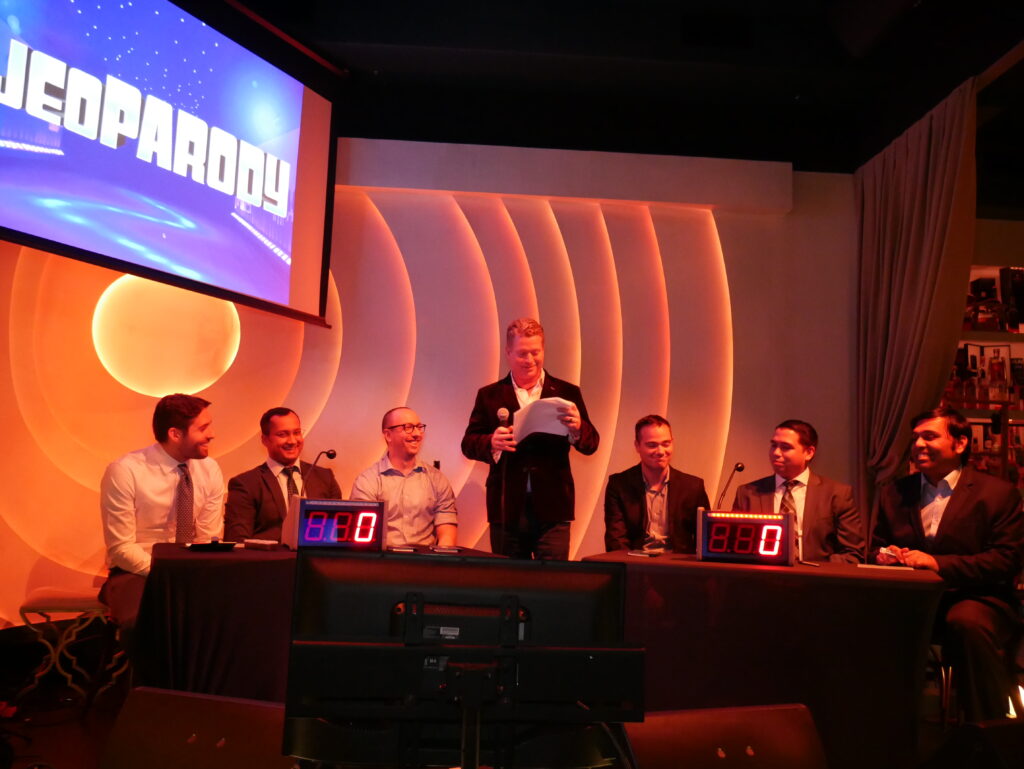
Book a Live Interactive Game Show!
Call us today. TV Style Game Shows for groups are our specialty. Let's Play!
Treatment Options for Enhancing Gamification
To enhance gamification in team meetings, several treatment options and strategies can be employed to maximize effectiveness and engagement. IT’S PLAYTYME Game Shows offers a range of solutions designed to bring gamification to life in your meetings. Here’s a look at some effective treatment options and preventive measures:
Comprehensive Solution for Gamifying Meetings
IT’S PLAYTYME Game Shows provide a robust solution for gamifying team meetings. Their interactive game shows incorporate various game mechanics—such as points, challenges, and leaderboards—to create engaging and memorable experiences. These game shows are designed to integrate seamlessly into your meetings, offering a fun and dynamic way to achieve your meeting objectives.
Customizable Game Formats
One of the key benefits of IT’S PLAYTYME Game Shows is their customizable game formats. Tailoring game formats to fit the specific needs and goals of your team can significantly enhance the effectiveness of gamification. Whether you’re aiming to boost team morale, encourage collaboration, or drive innovation, IT’S PLAYTYME offers customizable options that align with your meeting objectives, ensuring a relevant and impactful experience.
Interactive Challenges
Incorporating interactive challenges is another effective way to stimulate participation and teamwork. IT’S PLAYTYME Game Shows feature a diverse range of challenges designed to engage and motivate participants. These challenges encourage active involvement, foster collaboration, and make the meeting experience more dynamic and enjoyable.
Professional Facilitation
Experienced facilitation is crucial for the smooth and effective implementation of gamification elements. IT’S PLAYTYME provides professional facilitators who ensure that the game shows run smoothly and that all participants are engaged. The facilitators are skilled in managing game elements, handling logistics, and keeping the energy high throughout the meeting.
Regular Updates
To keep gamification fresh and exciting, it’s important to regularly update gamified elements. IT’S PLAYTYME Game Shows offer new and innovative formats to keep your team meetings dynamic. By introducing new game elements and updating existing ones, you can maintain participants’ interest and prevent the gamification experience from becoming stale.
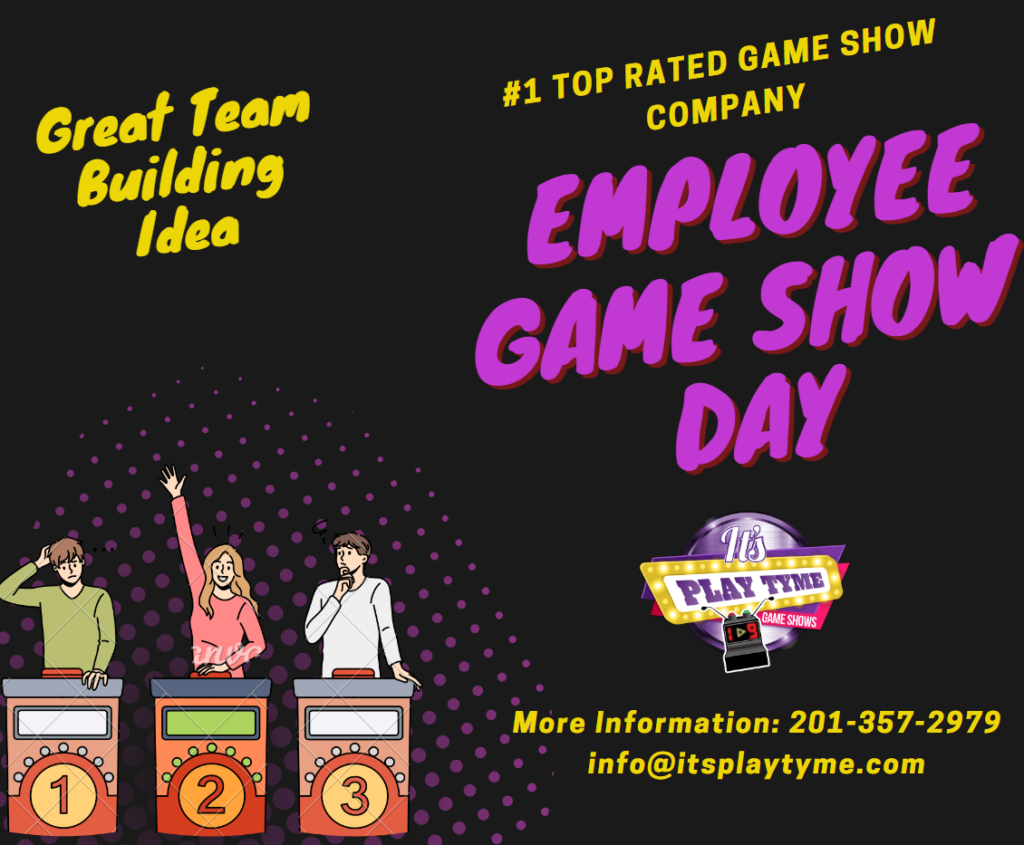
employee-engagement-game-show-idea
Preventive Measures for Successful Gamification
Implementing effective gamification strategies involves not only utilizing the right tools but also ensuring that the approach is well-planned and executed. Here are some preventive measures to ensure successful gamification:
Set Clear Objectives
Establish clear goals for your gamification efforts to ensure alignment with meeting objectives and participant expectations. Define what you want to achieve with gamification, whether it’s improving team collaboration, increasing engagement, or achieving specific project milestones. Clear objectives provide direction and help measure the success of your gamification strategies.
Design Thoughtfully
Design gamification elements that resonate with your team’s interests and preferences. Take into account the feedback and preferences of your team members to create engaging experiences. Thoughtful design ensures that gamified elements are relevant, meaningful, and effective in achieving your meeting goals.
Balance Competition and Collaboration
Ensure a healthy balance between competitive and collaborative elements in your gamification strategy. While competition can be motivating, it’s important to foster a positive and inclusive environment by incorporating collaborative elements as well. A balanced approach helps prevent stress and resentment while promoting teamwork and camaraderie.
Maintain Consistency
Implement gamification strategies consistently to build trust and familiarity among participants. Consistent application of game elements helps create a reliable and predictable experience, making it easier for participants to engage and stay motivated. Consistency also helps reinforce the effectiveness of gamification over time.
Adapt and Evolve
Be prepared to adapt gamification strategies based on feedback and changing needs. Regularly review and adjust your approach to ensure that it remains relevant and effective. Adaptability allows you to address evolving preferences and challenges, keeping your meetings engaging and impactful.
Personal Stories or Case Studies
Case Study 1: Corporate Team Building
A major corporation utilized IT’S PLAYTYME Game Shows for their annual team-building event. The interactive format significantly boosted team cohesion and enhanced communication among employees. The game shows created an engaging environment that led to improved workplace dynamics and stronger team relationships.
Case Study 2: College Orientation
A university incorporated gamified elements into their freshman orientation using IT’S PLAYTYME Game Shows. The engaging format helped new students connect with each other and the campus community, fostering a welcoming atmosphere and easing the transition into college life.
Case Study 3: Private Parties
For a private party, a client chose IT’S PLAYTYME Game Shows to add excitement to their event. The guests enjoyed the interactive games, making the party memorable and enjoyable for everyone. The gamified elements created a fun and engaging atmosphere, enhancing the overall experience of the event.
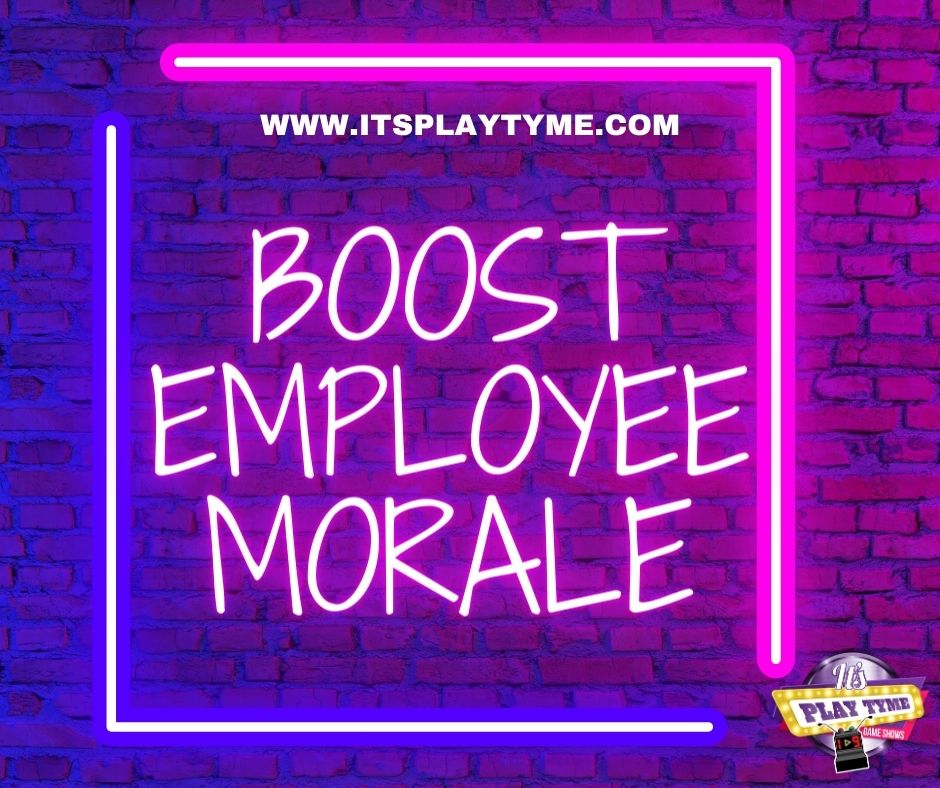
boost-staff-morale
Expert Insights
Quote from a Team Building Expert
“Gamification is a powerful tool for increasing engagement and motivation in team settings. IT’S PLAYTYME Game Shows offer a unique and effective way to integrate game elements into meetings, making them both fun and productive.”
Advice from a Corporate Trainer
“Using gamification strategies like those offered by IT’S PLAYTYME can transform mundane meetings into dynamic and interactive experiences. It’s all about creating an environment where participants are motivated and eager to contribute.”
Conclusion
Gamifying team meetings through innovative approaches like IT’S PLAYTYME Game Shows can significantly enhance engagement, collaboration, and productivity. By incorporating game elements and employing thoughtful strategies, you can transform your meetings into interactive and enjoyable experiences. Embrace gamification to make your team meetings more effective and fun, and watch your team’s dynamics and productivity thrive.
FAQ – Gamification
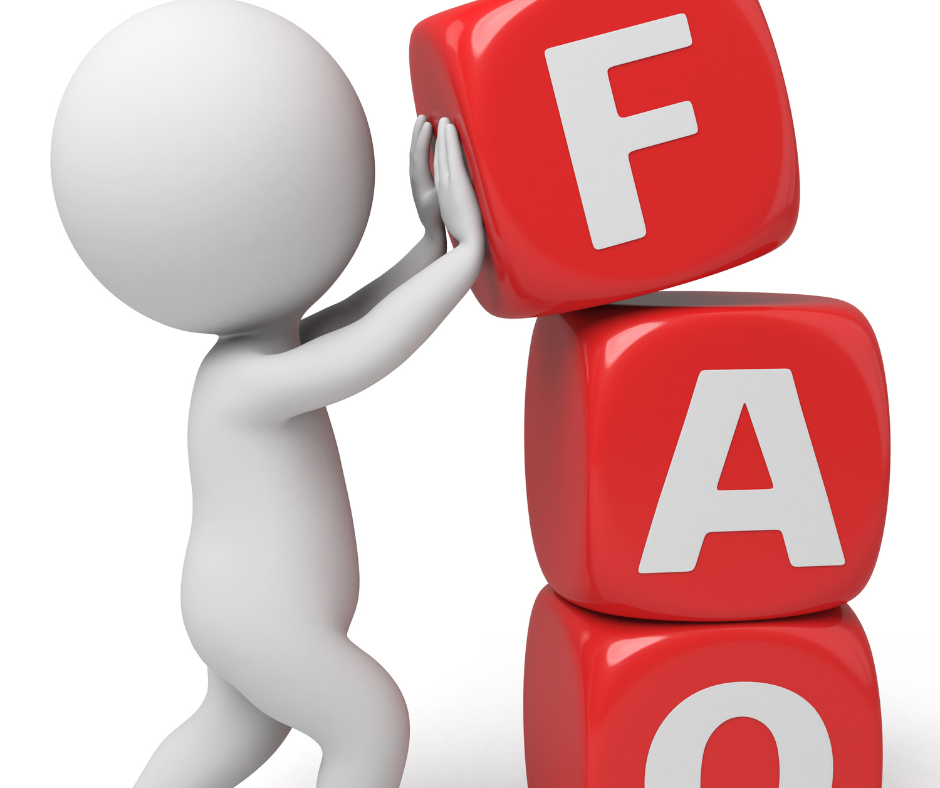
frequently asked questions
- What is gamification in team meetings?
Gamification in team meetings involves integrating game-design elements such as points, badges, and leaderboards into meeting structures to enhance engagement and motivation. - How can IT’S PLAYTYME Game Shows help with gamification?
IT’S PLAYTYME Game Shows provides interactive game formats that can be customized to fit various meeting objectives, making team meetings more engaging and enjoyable. - What are the benefits of gamifying team meetings?
Gamifying team meetings can lead to increased engagement, improved collaboration, enhanced productivity, and better retention of information. - What are common pitfalls in gamification?
Common pitfalls include lack of clear objectives, poor design, overemphasis on competition, inconsistent implementation, and lack of adaptability. - How can I measure the effectiveness of gamification in my meetings?
Effectiveness can be measured through feedback surveys, engagement metrics, performance analysis, observation, and trial and error.

